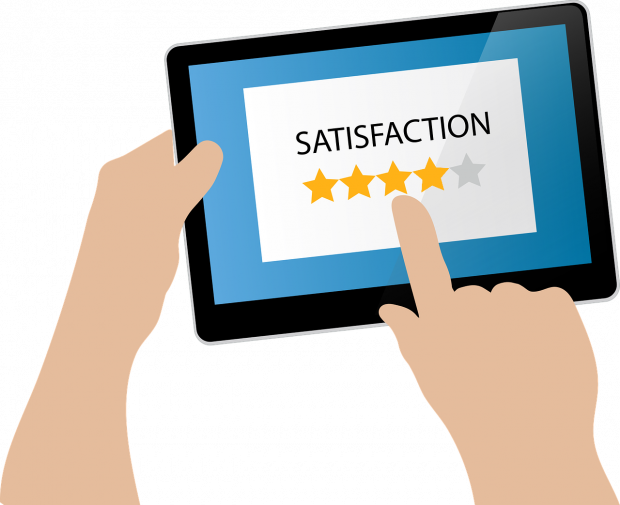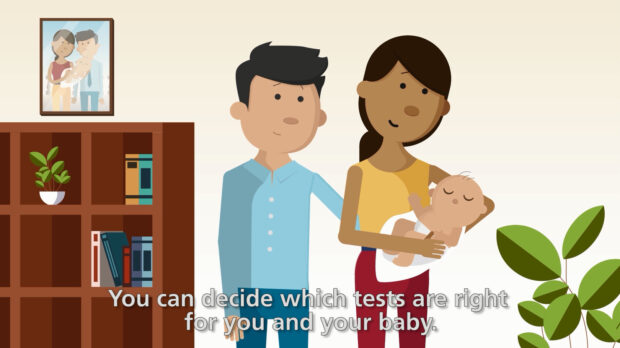
It’s a principle of government to ask users before changing a service. This makes sure that the service or resource is designed with them in mind and that we do not make incorrect assumptions about what they need.
The move from physical leaflets to digital screening information is a significant change and we therefore want to talk to as many people as possible to help plan the transition. This user research started with the survey of antenatal and newborn screening co-ordinators we blogged about previously.
Since then, we’ve been busy doing lots more research that we’d like to tell you about here. Be warned – this blog is slightly longer than usual but bear with us as we think you'll find it interesting!
Focus groups
Sitting down with a group of people to have an in-depth discussion can be one of the best ways to explore an issue in detail. We’ve carried out 2 such groups with pregnant women so far. The first, in London, was with a group of women who speak English as a second language. The second, near Liverpool, was in an area with some social deprivation.
We’re hugely grateful to the health professionals and women who made both events so fantastically helpful.
Both groups discussed issues such as:
- what they think of the current Screening tests you and your baby leaflet
- what they like and dislike about online information
- what they think of our new digital accessible webpage (HTML) version of the leaflet
- using more animations and videos to explain screening
- how we can share the advantages of digital information without disadvantaging anyone
Focus group 1 – English as a second language
All the women liked the current information, with one saying that in the country where she grew up, information like this is just not provided. While they mostly thought the language was clear and simple they also said they preferred to read a translation in their own language if possible.
Opinion was split about whether they preferred to read digital or non-digital information. They all valued face to face discussions with a health professional but said that if that was not possible they’d search online.
They all had access to the internet but clearly had concerns about the accuracy of some online information. They all felt they could trust the leaflet.
In general they said they preferred printed leaflets, though when we showed them the new HTML version of the leaflet, they really liked it and found it straightforward to use. They really liked having the translations also available in accessible format.

We showed them the easy read leaflets, which they thought were really useful for people who do not speak English well. They also loved the animation and felt the visuals helped them to understand the voiceover.
Focus group 2 – area with social deprivation
This was our biggest ever focus group – 15 women and dads aged between 18 and 36 (and some babies too!).
Views on the current leaflet were pretty mixed. The length was a particular issue, with one person commenting "I like reading a lot but this is very long". They thought the large blocks of text could be a bit off-putting and were keen for it to be broken up into bullet points as much as possible. They agreed they would trust the information in the leaflet.
Everyone felt comfortable finding information online, with many people telling us they do "everything" online nowadays. All the women said they'd be happy to get screening information online rather than in a leaflet. They all had easy access to the internet through their mobile phones. They did think that a few people, such as those living in rural areas without good internet access, might still need a physical leaflet.
They really like the new HTML leaflet, mostly scoring it 10 out of 10. They all wanted the web address to be as short as possible.
They loved the animation, saying it had the right level of information and was easier to understand than reading.
View from an antenatal clinic
We spent a great day camping out at St Mary's Hospital in Manchester talking to about 40 women attending one of their antenatal clinics.
The women were from a wide range of backgrounds and ethnic origins. They mostly liked the current leaflet, scoring it on average about 8 out of 10.
Over half of them said they'd be completely happy to get the screening information in digital form instead of a leaflet. A few said they'd prefer a physical leaflet but their partners would prefer digital format. The rest were somewhere in the middle, saying they'd get used to digital information even if it was not their first choice. They all said there would be a small group of women who would need a physical copy in the future.
All the women had access to the internet, either by phone, computer or both. They also liked like our new HTML leaflet, almost everyone scoring it 8, 9 or 10 out of 10 when they tried it out. Women told us they'd trust the information as it's on a government website and really like how it's split into chapters and has translations if they need them.
They expressed a clear need for the web address of the digital version to be as short and easy to type in as possible. That's something we're going to work on.
While most women had not seen our screening animation, they loved it when we showed it to them. Again, many scored it 10 out of 10 and thought it would be an ideal way for midwives to explain screening to them at the booking appointment. Many also suggested that we work on new videos and animations to help explain each type of screening in more detail.

Finally, we asked them about the length of the leaflet and whether they'd prefer the full version or a shorter version. Opinion was split on this.
Some people said they'd be much more likely to read the short version but others liked using the long version as a guide they could refer back to if needed. We're not going to change the amount of information straight away but we will revisit this at a later date and see if we can shorten the leaflet a bit.
In-depth discussions with screening co-ordinators
We've had several group discussions with antenatal and newborn screening co-ordinators, which have been fantastically helpful (a big thanks to everyone who took part).
We talked about the ways in which women are booking and getting screening information in their areas. It's clear there's lots of variation, with some 'early bird' systems allowing women to self-refer through the website of their local trust and other places where it happens through discussion with a midwife or GP. We'll be looking at how we can support trusts to move to digital information no matter what their current processes are.
All the co-ordinators thought that there would always be some women who would need a physical leaflet. Estimates for this varied from 5% to 15% of pregnant women.
Feedback about the length of the leaflet was mixed. Some colleagues thought it was necessarily long, others that it can be off-putting to some women. One suggestion was to have different versions depending on how much someone wanted to read.
The leaflet was seen as a useful resource for midwives as much as women. In particular, recently qualified midwives find it a helpful guide to discuss screening at the booking appointments. While midwives in some areas have access to IT during booking appointments, this is not always the case. So we need to find different ways for midwives to signpost women to the new digital screening information.
One area is already showing the animation in waiting rooms and told us it has been very well received.
In general, all the co-ordinators and midwives we've spoken to have been very positive about the move to digital information, as long as vulnerable women do not miss out. One told us "The idea of not giving out paper leaflets has been taken up our trust. We don’t give out any paper maternity leaflets, they are all on our website. The trust doesn’t want paper leaflets either."
Next steps
We’re running an event for screening co-ordinators on 2 October 2019 in Birmingham. Unfortunately all the places have now been taken but we look forward to seeing some of you there. And if you cannot make it, we’ll be publishing a blog post about it afterwards.
We’re also working with digital inclusion experts Citizens Online to fine tune our plans. In particular, they’ll be carrying out a full equalities impact assessment on the move to digital screening information to help us make sure no-one is disadvantaged by the change. They’ll be blogging about this work so keep an eye out for this.
Following all the positive feedback about our antenatal and newborn animation, we will get this subtitled into multiple languages once we've completed our current review to see if it can be improved. As our translations are also clearly highly valued, we have just translated the latest version of Screening tests for you and your baby to make sure the translated versions are completely up to date.
It will be important to try out the new digital information in a few areas before launching it nationally. We have therefore started planning a pilot for early in 2020.
So there’s lots happening! We hope you’re as excited as us in this work to move screening information into the digital age.
PHE Screening blogs
PHE Screening blogs provide up to date news from all NHS screening programmes. You can register to receive updates direct to your inbox, so there’s no need to keep checking for new blogs. If you have any questions about this blog article, or about population screening in England, please contact the PHE screening helpdesk.